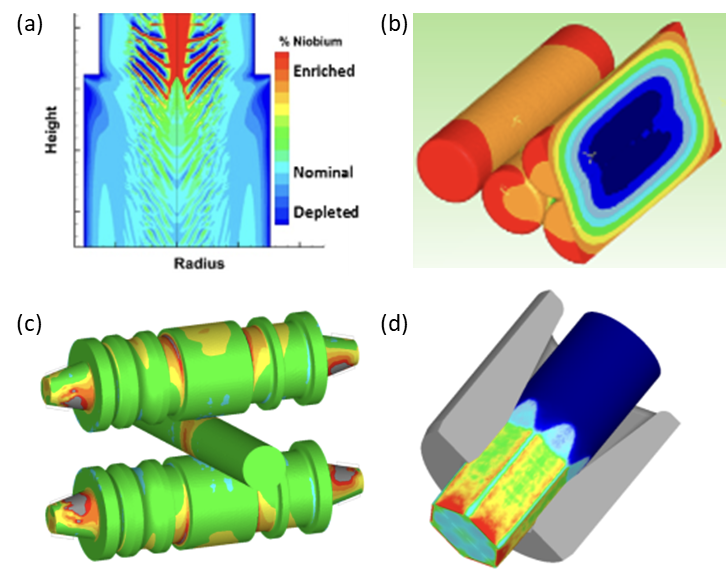Modeling and Integrated Computational Materials Engineering
Market Insights
Author: Carpenter Technology
Modeling and Integrated Computational Materials Engineering for at-scale manufacturing
As a primary metals producer, Carpenter Technology understands the need to innovate to provide solutions for our customers. Ongoing advancements in critical industries like energy, aerospace, electrification, and medical devices drive a continuous demand for new materials. New product and process development, enhancements, and troubleshooting often begin in the Research and Development laboratory, where there is access to numerous small-scale tools to design and manufacture alloys at a cost-effective, short time scale. The true challenge is taking knowledge from the lab and scaling up to industrial manufacturing.
Industrial-scale processing for a specialty alloy producer might mean an experimental scale of 20 tons of metal that needs to be heat treated for 72 hours, followed by forging, rolling, machining, cold working, and numerous thermal handling steps. Considering the value of the raw materials used and the opportunity cost of displacing high-end aerospace products, costs can easily exceed hundreds of thousands of dollars.
Computational modeling tools and Integrated Computational Materials Engineering (ICME) can reduce the costs of development by reducing the number of experiments and accelerating trials to short-circuit the process needed to bring new materials to market. These tools include modeling packages that give our R&D experts the capability to model aspects of every single manufacturing step, including melting, remelting, annealing, forging, rolling, machining, finishing, and testing. We use a combination of process models based on finite element and finite difference techniques, computational fluid dynamics, physics-driven analytical models, and empirical approaches to understand the process-properties leg of the Materials Pyramid.
With our advanced codes and techniques to simulate alloys based on their chemistry, we have access to nearly the entire periodic table to scan for new compositions to meet our customers' needs. When we marry these techniques in ICME, we can capture all aspects of modern metallurgy. This is bolstered by emerging approaches, or Industry 4.0, where machine learning and artificial intelligence are used to ingest large data sets and make connections to performance readily apparent to the subject matter expert. Each of these tools and each step of this approach is strengthened by our characterization and testing capabilities and our workforce's vast wealth of experience.
Watch our blog for examples of how we apply computational modeling for materials, ICME, and emerging technologies to solve real-world industrial problems that have made, and continue to make, Carpenter Technology the solutions provider for our customers.

